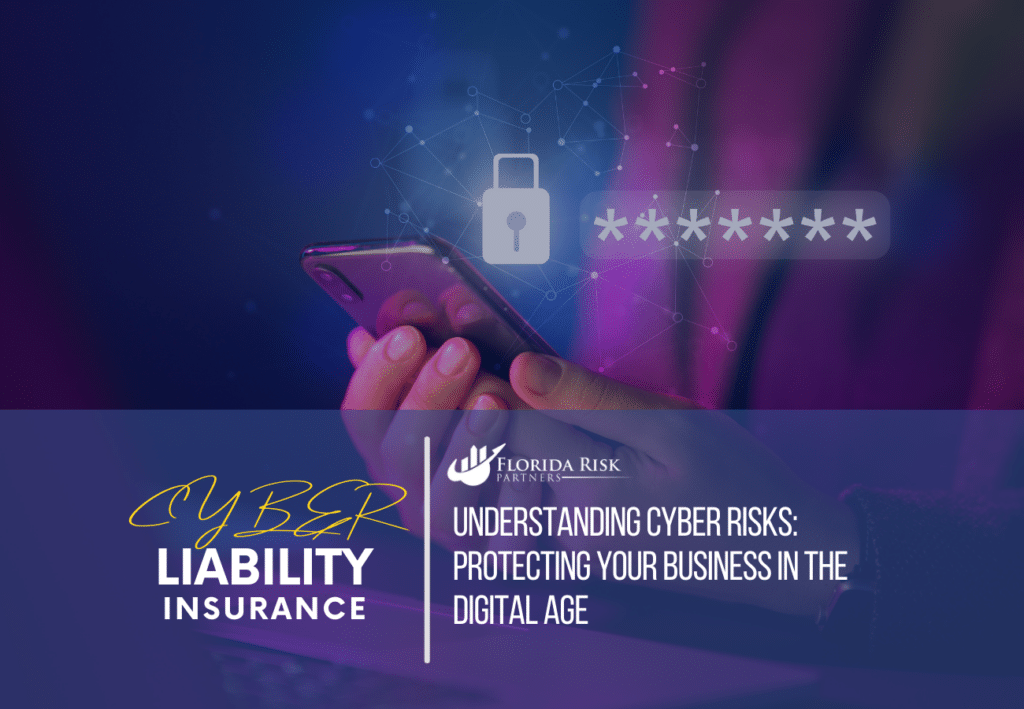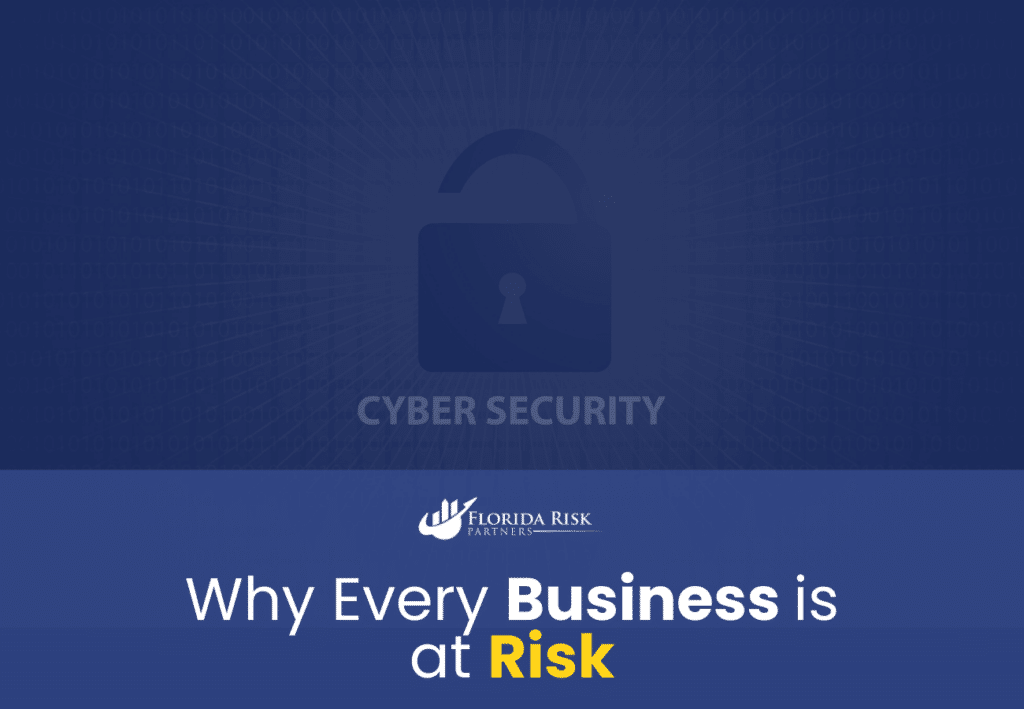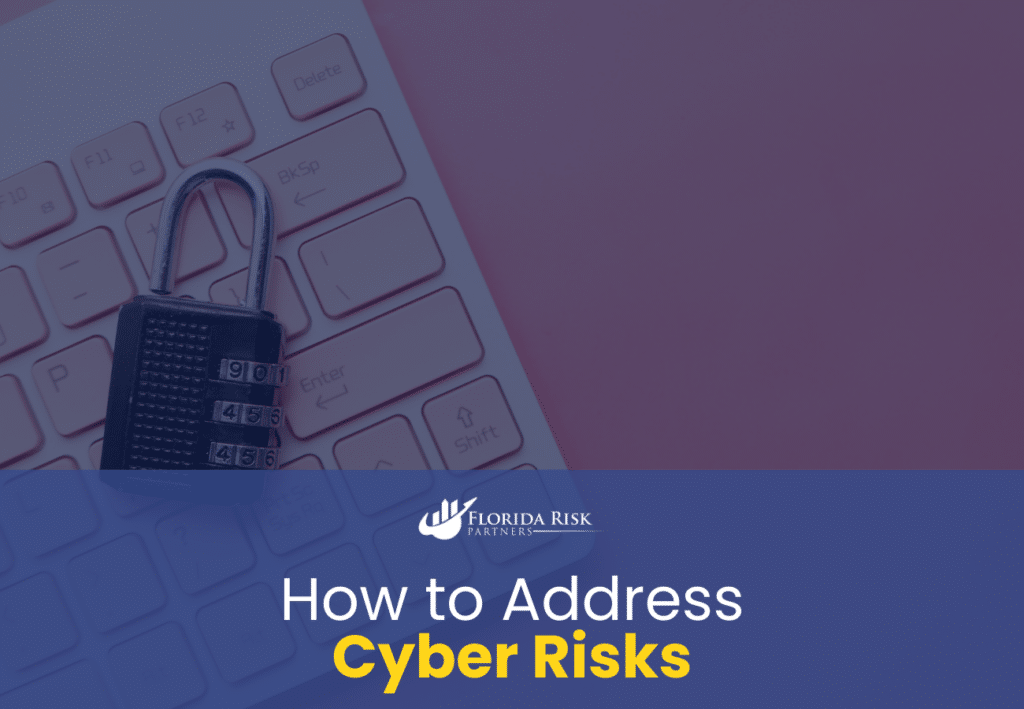-
Main Office: 1434 E. Bloomingdale Ave Valrico, FL 33596-6110
-
Phone: (888) 601-6660
-
Email: info@floridariskpartners.com

In an increasingly connected world, businesses of all sizes face growing threats from cybercriminals. Whether it’s a ransomware attack, phishing scam, or data breach, the consequences of a cyber incident can be devastating, leading to financial losses, operational disruptions, and reputational harm. Yet, many business owners remain unaware of the full scope of risks their companies face.
This guide will explore the digital risks businesses encounter and explain how to address them effectively. Understanding these risks is the first step toward building a robust cybersecurity strategy and safeguarding your organization.
What Are Cyber Risks?
Cyber risks refer to potential threats to your business’s digital assets, including data, networks, and systems. These risks often arise from malicious activity, human error, or vulnerabilities in your technology infrastructure. While some threats target specific industries, many are indiscriminate, affecting businesses of all sizes.
Common Types of Cyber Threats
- Ransomware Attacks Ransomware is a type of malware that encrypts your data, rendering it inaccessible until a ransom is paid. These attacks often start with a phishing email or an infected attachment and can cause significant downtime and financial loss.
- Phishing Scams Phishing involves fraudulent emails or messages designed to trick recipients into sharing sensitive information, such as login credentials or financial data. These scams are becoming increasingly sophisticated, often mimicking legitimate organizations.
- Data Breaches A data breach occurs when unauthorized individuals access sensitive information, such as customer records or financial data. Breaches can result from hacking, lost devices, or inadequate access controls.
- Distributed Denial of Service (DDoS) Attacks In a DDoS attack, hackers overwhelm a website or network with excessive traffic, causing it to crash. These attacks can disrupt operations and damage your reputation.
- Insider Threats Not all cyber threats come from external attackers. Employees or contractors with access to sensitive information can unintentionally—or intentionally—compromise your data.
Why Every Business is at Risk
Many business owners believe their company is too small or niche to be targeted by cybercriminals. Unfortunately, this mindset often leads to underestimating the true extent of cyber risks.
Small Businesses Are Prime Targets
Small and mid-sized businesses are increasingly targeted because they often lack the robust cybersecurity measures of larger corporations. According to recent studies, over 40% of cyberattacks target small businesses, which are viewed as easier and more vulnerable targets.
Human Error Amplifies Risks
Even with strong cybersecurity measures in place, human error remains a leading cause of cyber incidents. Employees may click on phishing links, use weak passwords, or fail to recognize red flags.

The Cost of Cyber Incidents
The financial impact of a cyberattack can be catastrophic, especially for smaller companies. Costs can include:
- Downtime: Lost revenue during system outages.
- Breach Notification: Expenses related to informing customers and regulatory authorities.
- Legal and Regulatory Fines: Penalties for non-compliance with data protection laws.
- Reputational Damage: Loss of customer trust and brand credibility.
Industries Facing Heightened Cyber Risks
While all businesses are vulnerable to cyber threats, some industries face unique challenges due to the nature of their operations and data.
Healthcare
Healthcare organizations handle sensitive patient data, making them prime targets for data breaches and ransomware attacks. Compliance with regulations like HIPAA adds another layer of complexity.
Finance
Financial institutions are at risk due to the high value of the data they handle, including banking information and personal details. Regulations like PCI DSS require stringent cybersecurity measures.
Retail and E-Commerce
Businesses in the retail and e-commerce sectors are frequent targets for payment fraud and data breaches. A single incident can compromise thousands of customer records.
Professional Services
Law firms, accounting firms, and consultants often store sensitive client information, making them attractive targets for cybercriminals.
How to Address Cyber Risks

Understanding the risks is only the first step. Taking proactive measures to protect your business is critical to minimizing your exposure and recovering effectively from an incident.
Conduct a Cyber Risk Assessment
A cyber risk assessment involves identifying potential vulnerabilities in your systems, processes, and personnel. This allows you to prioritize your efforts and allocate resources effectively.
Invest in Cybersecurity Tools
Implementing advanced tools can help detect, prevent, and respond to threats. Essential tools include:
- Firewalls and antivirus software.
- Intrusion detection systems.
- Data encryption.
Train Your Employees
Employees are often the weakest link in cybersecurity. Regular training sessions can help them recognize phishing attempts, create strong passwords, and report suspicious activity.
Develop an Incident Response Plan
Having a plan in place ensures your team knows how to respond to a cyber incident. Key components include:
- Immediate containment measures.
- Roles and responsibilities for key personnel.
- Communication protocols for notifying stakeholders.
Consider Cyber Liability Insurance
While cybersecurity measures reduce your risk, they can’t eliminate it entirely. Cyber liability insurance provides a financial safety net for expenses like data recovery, legal defense, and breach notifications.
The Role of Cyber Liability Insurance
Cyber liability insurance is designed to complement your cybersecurity efforts by covering the financial fallout of cyber incidents. It addresses both first-party and third-party risks, including:
- Costs related to business interruption, ransomware payments, and data restoration.
- Legal fees, settlement payments, and regulatory fines.
By transferring some of the financial risk to an insurer, your business can recover more quickly and with less strain on your resources.
Download Our Complimentary Guide to Purchasing Cyberliability Insurance
Take the Next Step Toward Protecting Your Business
Understanding and addressing cyber risks is essential for safeguarding your business in today’s digital age. With the right combination of proactive measures and financial protection, you can minimize your exposure and respond effectively to threats.
To learn more about how to protect your business from cyber risks and the role of cyber liability insurance, read our in-depth guide: The Complete Guide to Cyber Liability Insurance. This comprehensive resource will help you take control of your cybersecurity strategy and secure your business for the future.
Don’t wait until it’s too late—protect your business today!
Call Us Or
Schedule an Appointment
Select an agent below to view our online calendars and select a day and time that works best for you or call us directly at 888-601-6660. When you use our online calendars, you will receive an email with more information.



